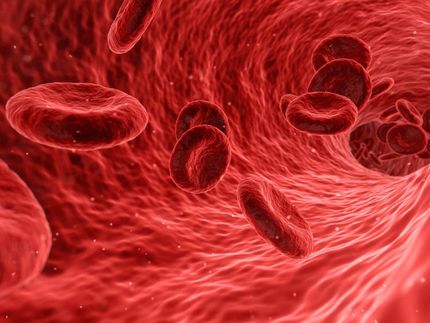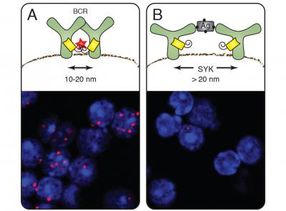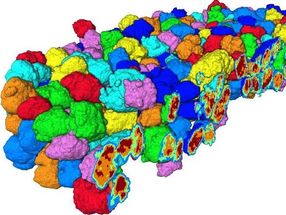Researchers decipher “don’t eat me” mechanism
Researchers discover approach for treating complications after bone marrow transplants
Advertisement
For many leukemia patients, the only way to become healthy again is receiving a transplant of blood stem cells from a bone marrow donor. However, this can lead to complications, including graft-versus-host disease. Researchers at Friedrich-Alexander-Universität Erlangen-Nürnberg (FAU) have now deciphered the mechanism behind this often life-threatening complication and laid the foundations for a possible therapy.
One feature of graft-versus-host disease are severe inflammatory processes occurring particularly in the intestines. It is known that macrophages have an important role to play. Their role is to ingest and break down dead or pro-inflammatory cells. If this fails to happen, it triggers an excessive and often dangerous immune reaction.
Working together with researchers from the Universities of Regensburg and Würzburg within the context of CRC/Transregio 221, the team led by biologist Dr. Heiko Bruns from the Chair of Hematology and Oncology at FAU has now discovered that a protein named CD47 makes the decisive difference: T cells with significant amounts of this protein on their surface are spared by the macrophages. The protein gives the macrophages the signal “don’t eat me!”. T cells are white blood cells and therefore play a significant role in the body’s immune system. Under certain circumstances, however, they can turn against the organism and trigger severe inflammation.
Dr. Heiko Bruns explains, “We were excited to discover that a specific antibody that is already used against CD47 in therapeutic interventions can circumvent the mechanism that inhibits the macrophages and therefore boost their ability to ingest the T cells triggering the disease. This may have a significant impact on alleviating the symptoms of graft-versus-host disease.”
Original publication
Cindy Sheree Flamann, Haroon Shaikh, Carina Matos, Marina Kreutz, Hla Ali, Michael AG Kern, Maike Büttner-Herold, Benedikt Jacobs, Simon Völkl, Christopher Lischer, Christian Kellner, Johannes Berges, Katrin Bitterer, Domenica Saul, Manisha Goel, Cornelia Link-Rachner, Alma Zernecke, Daniela Andrea Weber, Dimitrios Mougiakakos, Andreas Mackensen, Andreas Beilhack, Heiko Bruns; "Augmented CD47 expression impairs alloreactive T-cell clearance after allo-HCT"; Blood Journal, 2025-5-7





















































